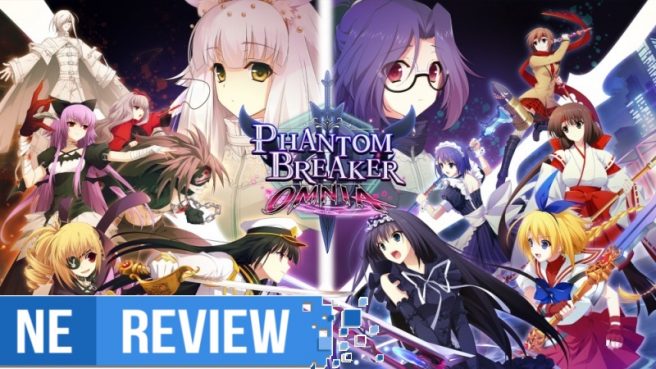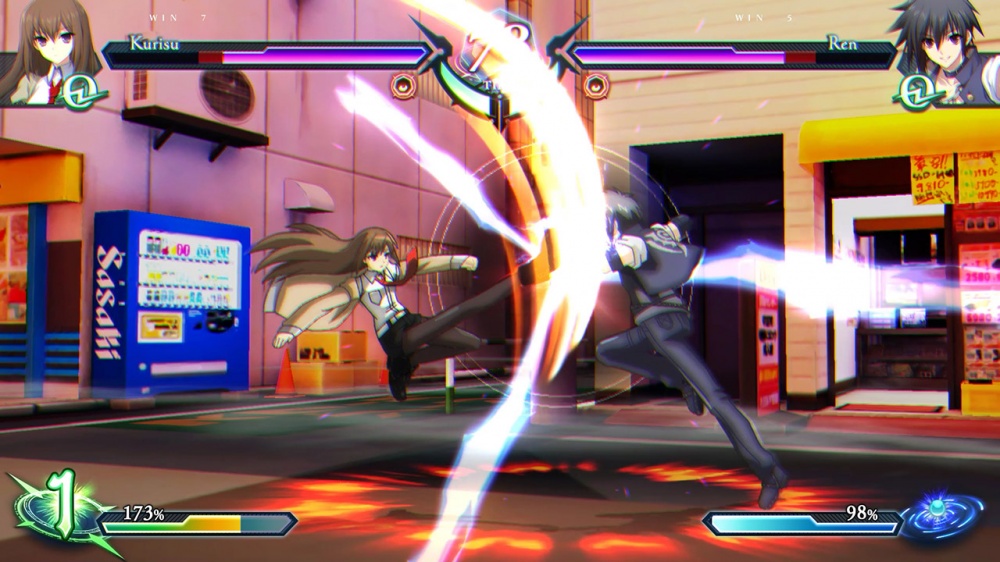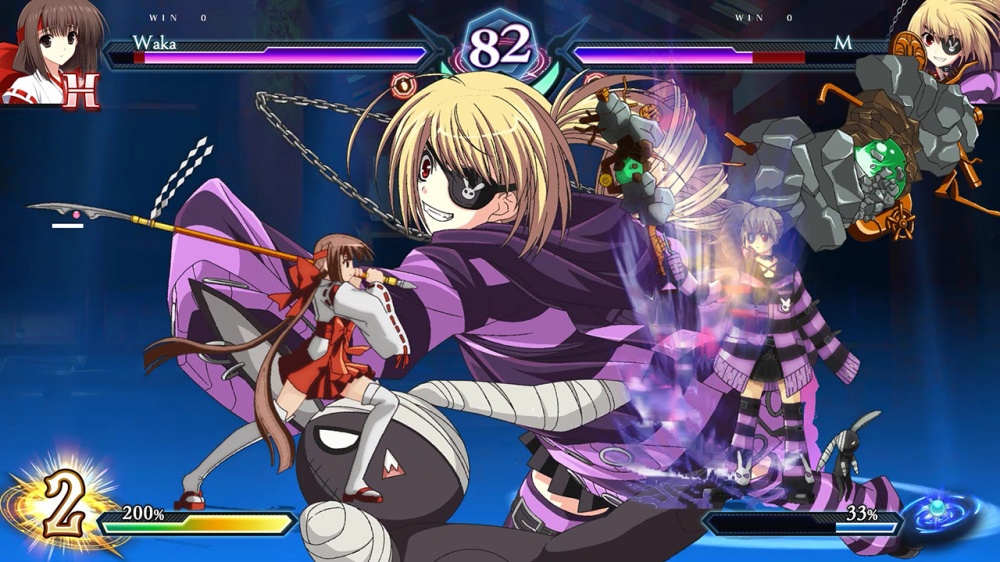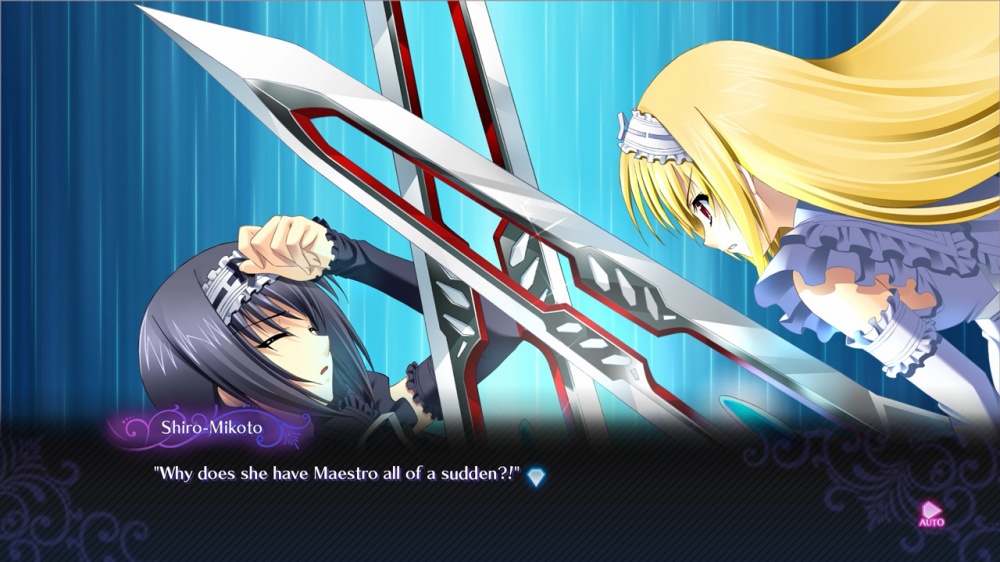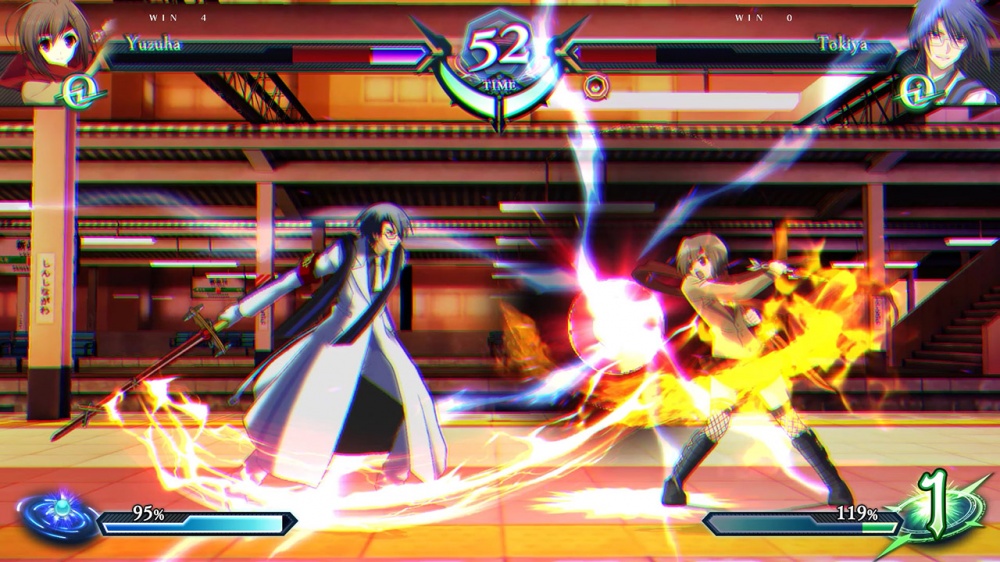[Review] Phantom Breaker: Omnia
System: Switch
Release date: March 15, 2022
Developer: Mages
Publisher: Rocket Panda Games
Phantom Break: Omnia comes at a time when I believe there’s a resurgence of fighting games that not only revel in creativity and content, but take pride in bringing in a wider audience as to not feel left out. This doesn’t just mean making it easier to button mash – because accessibility does not equate to that – but the combos themselves and the understanding of the inputs have become streamlined and much more logical. Now with Phantom Breaker: Omnia, the game thankfully finds an incredible sweet spot of keeping things equal parts fun and approachable for all sorts of players while still retaining that exhilarating feeling and rush for those that want to excel in their style and focus on more ranked, competitive play.
Phantom Breaker: Omnia serves as an enhanced remake of Phantom Breaker from 2011 as well as the inclusion of its sequel, Phantom Breaker: Extra, and Mages has spared no expense at making sure it comes out swinging with a content-filled remake that looks, runs, and plays great on Switch with a ton of production value that exceeds its initial outing a decade ago. Containing fully-voiced characters in both Japanese and English – a first for the series alongside its localization – with notable voice actors attached such as Matthew Mercer and Christina Vee to name a few, the game provides an incredibly fun and fulfilling fighting experience that feels modern while respecting the foundation of its past and the genres core philosophies.
Phantom Breaker: Omnia boasts a hearty twenty characters designed in many ways to appeal to most aesthetics, and can be used in a wide range of modes. All characters are available from the start, which I found to be preferable so I could experiment and begin learning right away in its training mode, but I know some may find this to be less than favorable because unlocking the roster gives something to work towards. While Phantom Breaker: Omnia doesn’t necessarily have much to work towards and has most of its meat come from a fairly hefty story mode, online play, and single-player area that branches into Endless, Arcade, and Score Attack modes to name a few, continuously playing incentivizes unlocking in-game achievements which can also translate to gaining badges, character portraits, and unlocking illustrations in a gallery that serve as a way to customize a player profile for both online and offline play. The gallery itself acts as a sort of digital art book, and has illustrations from all sorts of artists that can be unlocked over time through basic play and completing each character’s personalized story in story mode. Although it may not seem like much on the surface, working towards all of these genuinely takes time, so I appreciated the fact that a fighting game for once (from recent years) wasn’t able to be 100% completed within two hours flat even with its characters all available from the start.
All characters being available means being able to get into the action right away with a fighter of your choice and not being obstructed by greyed-out portraits or forcing yourself to play as someone who you simply cannot click with. This also means that the story mode in Phantom Breaker: Omnia is left wide open to be played with a multitude of characters that each have their own background and reason for fighting in the world of Phantom Breaker. As for the actual plot, a dark-robed man named Phantom gives fighters, known as Duelists, the chance to have any wish they want so long as they come out on top. Some are against his overarching plot to control and dominate so they simply try to fight to make a statement and make their way towards him, while others run with it as an opportunity to get what they’ve always desired.
Each character has its own sort of short plot point, career path, and beliefs, but ultimately a lot the stories each fighter has (which can be experienced on a per character basis rather than one global story) more or less progress similarly. You’ll have a short visual novel segment followed by a fight, followed by another visual novel segment and then another fight, then rinse and repeat until you get to the end of each character’s 1-2 hour mini campaign. With a fair amount of characters to choose from in story mode, however, including additional Phantom Breaker: Extra campaigns, the entire thing becomes a fair chunk of time to invest into that remains fairly entertaining (though predictable and somewhat recycled) throughout. Even with its repetition and similarities from campaign to campaign, I really appreciated the fact that each character felt fairly fleshed out, giving each their own personality and set of allies and rivals to make the roster and world feel significantly more dynamic, even providing a bit of storytelling for each stage the Duelists find themselves on. To keep things even more engaging online and offline, the stage selection is dynamic and respectable, giving plenty of choice for backdrops that come in both day and night, providing a battleground from multiple cities of Japan and inspired-by fictional locations that make the fights feel more epic and robust.
These bouts between a roster of unique characters are accentuated even further through multiple fighting styles that are more tailored to the player’s style of play, though there are certainly pros and cons, with some characters even benefiting from specific ones. These formats come in three different styles: Quick Style, Hard Style, and the brand new Omnia Style. Each style is as you would expect and prioritizes different areas of fighting that may or may not work to your needs depending on what you’re looking for and the character attached. Quick Style has the highest speed and allows characters to perform a double-jump as well as the ability to perform combos with any repeated press of a light, medium, or heavy attack. The downside is that it gives you lower health but with the tradeoff that it has the benefit of easier combo execution and faster Burst Gauge recovery, which helps utilize powerful finishing and signature moves. Hard Style is a powerhouse style that sacrifices speed, double-jumps, and combos for hard-hitting attacks and much more HP, so for those that prefer a slower and more methodical approach this would be the one to go for. Omnia Style is an all-encompassing style where speed and health are balanced between Quick Style and Hard Style. You can double-jump as well, but there are a few other mechanics, such as the Overdrive and Emergency Mode, that are unavailable in the Omnia Style.
I found Omnia Style to be the most preferable way to fight, as it gave a nice stat boost to most characters and made the fighting itself feel much more refined and focused. However, I very much enjoyed Quick Style as well thanks to the fluidity and speed of character’s movements and move sets available to them. I’ve never been one for tanks or the sort, but the Hard Style most certainly still provides huge benefits and will click to those who favor that style of play. Each style of fighting has its own pros and cons, but no matter what you choose each feels thought out, polished, and consistent throughout every character.
Phantom Breaker: Omnia does well to streamline the foundation of its genre and make it super approachable, and it also adds layers of depth through its more passive mechanics that make the game much more fun and intense at times. These features come in the form of utilizing the Burst Gauge on the bottom left (or right) of your screen that increases each time you deal or receive damage. By using it at certain intervals and levels, you can take advantage of finishing moves, cancels, and attacks that can help you in a number of situations, whether it’s being pinned up against a corner, as a counter attack, or just to finish your opponent off in an epic way.
Overdrive, for example, can be activated by consuming all of your Burst Gauge that is charged to at least 100%. In Quick Style, Overdrive will trigger Clock Up, which increases the user’s speed while decreasing the speed of their opponent. In Hard Style, Overdrive will trigger Solid Armor, a condition where the character no longer staggers even when hit by an opponent’s attack. An All-Range Attack is a powerful attack option unique to Omnia Style which will consume your fully charged Burst Gauge to fire a projectile that has excellent range. An All-Range Attack also has invulnerability frames during the startup of the attack, making it useful for interrupting an opponent’s offense or taking advantage of its high damage and incorporating it into a combo. Emergency Mode is a way to escape out of a hit-stun, while Critical Bursts are a devastating, unblockable attack that is unleashed. Finally, the star of the show, Phantom Break, is a powerful attack that consumes all of the Burst Gauge (at maximum) and has immense power. Phantom Break moves differ from character to character, but they are also unique per style, and adds a lot of personality to the roster’s already charismatic cast of duelists.
It may seem like a lot to take in at first, but I was able to get the hang of it fairly quickly, and a lot of the moves can be done in a consistent fashion with them differing mainly on how and when you decide to activate the attacks relative to the level of your Burst Gauge or if you’re already in a situation that would call for a certain mechanic to prioritize over another. You don’t have to sit there and memorize fifty-seven separate commands, as one or two buttons (typically the triggers) will usually take care of triggering any of the aforementioned special attacks. So long as you’re paying attention to your Gauges, you should be good to go not long after getting comfortable with the controls of the game.
Phantom Breaker: Omnia is the first fighting game in a long time that’s simply made sense to me, and I think will do so to a lot of players as well. It doesn’t focus on assigning buttons to each appendage of the body, and instead keeps things to a simple light, medium, and heavy attack that can then be mixed and matched any which way with the combination of directional inputs by the player to create combos and flashy fights that feel consistently fun, fluid, and engaging which furthermore makes the player want to come back and immediately set up another thrilling fight to go at it again. I feel like more often than not I spend a lot of my time in fighting games spending the first few hours in training mode getting myself comfortable with the controls and characters before I actually set off to do the story, arcade, or any other available modes one offers, and while I spent time in training mode in Phantom Breaker: Omnia, I was up and running in about ten minutes once I realized how streamlined and intuitive all of the buttons and mechanics were. Phantom Breaker: Omnia feels like a healthy package that is almost reminiscent of the pre-DLC days where games were complete in box, and thanks to its approachability that gets you in the action right away while still having that level of depth to feel engaging with the option to be competitive for those that seek it. For fighting game fans or those wanting to jump into a new one that haven’t in a while, Phantom Breaker: Omnia is a great place to jump in and invest your time with that’ll keep you busy for quite a while.
The Verdict
Phantom Breaker Omnia offers a great set of characters that doesn’t feel too much or too little the chance to shine and feel unique. Thanks to a plethora of stages that are equal parts colorful, creative, and exciting, the game always feels like a flashy street fight that uses each character’s unique skills to its advantage, showcasing them on stages that no matter how small feel like spectacles more often than not with the Quick, Hard, and Omnia styles at their disposal. It’s a hearty package that gives plenty to do and is accessible in a lot of ways to make it easy for casual fans and newcomers to enjoy as well. Also, thanks to its unlockables, unique stories per character, and fluidity, Phantom Breaker: Omnia feels engaging throughout and provides many layers of depth to its system that will even appease hardcore fans of the genre.
Phantom Breaker: Omnia copy provided by the publisher for the purposes of this review.
